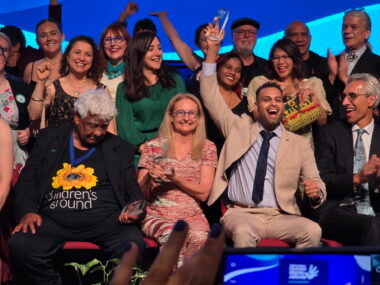Low-income earners across Tasmania are bearing the brunt of the state’s rental crisis, according to the tenth annual National Shelter-SGS Economics and Planning Rental Affordability Index.
The landmark annual study, released today, cross references incomes against rents and shows Tasmania’s most vulnerable households - those on pensions, JobSeeker or low-wage work - face a dire rental crisis with Unaffordable rents across the entire state.
Rents in Hobart remained stable in the past year, rising just 2.1 per cent, but this does not offset the rapid rise in costs over the past several years. Since 2016, the median rental rate in Hobart has grown by more than 60 per cent, with rents in the city just 10 per cent lower than the Melbourne median, despite the average rental household income being more than 18 percent lower.
With a RAI score of 108, households across Hobart are paying up to 28 per cent of their gross income of $91,592, which is considered Moderately Unaffordable. It’s even worse for people on low incomes, with single people on Jobseeker and single part-time workers on parent benefits facing Extremely Unaffordable rents.
The situation in regional Tasmania mirrors Hobart. Rents in the regions increased by just 2.6 per cent over the past year, but with a rental score of 111 it is classified as Moderately Unaffordable. Renters in the regions are spending about 27 per cent of their income on rent if renting at the median rate.
Regional centres such as Launceston are especially unaffordable with low-income earners and pensioners facing limited options. For those seeking Acceptable or Affordable rents, the only viable options are in the state’s north-west or central Tasmania, where essential services are often limited or difficult to access.
Acting Shelter Tas CEO, Kim Bomford, said: “Tasmania’s rental crisis is at breaking point, with low-income earners facing serious financial stress. Despite some improvement, the affordability crisis has deepened for those who can least afford it. Many are on the edge of homelessness and we need urgent reforms to stop the escalating financial stress that is plaguing the most vulnerable communities.
“The housing sector is in urgent need of intervention. Even households earning the average income can’t avoid rental stress, paying nearly 28 per cent of their income to keep a roof over their heads. This combined with more general cost of living pressures exacerbates the situation for those on low incomes.”
Shelter Tas is calling on the state government to take immediate and decisive action to reverse the housing crisis by committing to an increase in social housing to at least 10 percent of all dwellings, strengthening renters’ rights by modernising the Residential Tenancy Act 1997, increasing funding for homelessness services and regulating short-stay accommodation.
“We welcome the commitments in the 20-year Tasmanian Housing Strategy (2023-43), but as the Action Plan (2023-27) is implemented, the top priority must be to house Tasmanians at risk of or experiencing homelessness, with the ultimate goal of ending homelessness in Tasmania for good,” Ms Bomford said.
“With rent increases outpacing income growth, the current housing crisis isn’t just a blip - it’s the result of long-standing underinvestment in social and affordable housing. We need at least 10 percent of all dwellings in Tasmania to be social housing if we are going to stop the crisis from spiralling further.”
|
Household |
Affordability |
Rent as share of income |
RAI score |
|
Single person on JobSeeker |
Extremely unaffordable |
71 per cent |
43 |
|
Single pensioner |
Severely unaffordable |
44 per cent |
68 |
|
Pensioner couple |
Severely unaffordable |
37 per cent |
80 |
|
Single part-time worker on parent benefits |
Extremely unaffordable |
56 per cent |
53 |
|
Single full-time working parent |
Acceptable |
23 per cent |
131 |
|
Single income couple with children |
Moderately unaffordable |
27 per cent |
111 |
|
Dual income couple with children |
Very affordable |
14 per cent |
222 |
|
Student share house (three bedroom) |
Moderately unaffordable |
28 per cent |
108 |
|
Minimum wage couple |
Acceptable |
25 per cent |
122 |
|
Hospitality worker |
Moderately unaffordable |
25 per cent |
119 |
* Table comparing each household in Hobart and their rent as a share of income, as well as RAI score and affordability.
EDITOR’S NOTE:The rental affordability index scores areas based on median rental prices and average income of rental households within the capital city or rest of state area’. A score of 100 indicates households spend 30 per cent of income on rent, the critical threshold level for housing stress. A lower score is worse.
A score of 40 or less indicates critically unaffordable rents, 41-60 indicates extremely unaffordable rents, 61-80 indicates severely unaffordable rents, 81-100 indicates unaffordable rents, 101-120 indicates moderately unaffordable rents, 121-150 indicates acceptable rents, 150-200 indicates affordable rents and more than 200 indicates very affordable rents.
Contact details:
Nick Lucchinelli 0422 229 032

